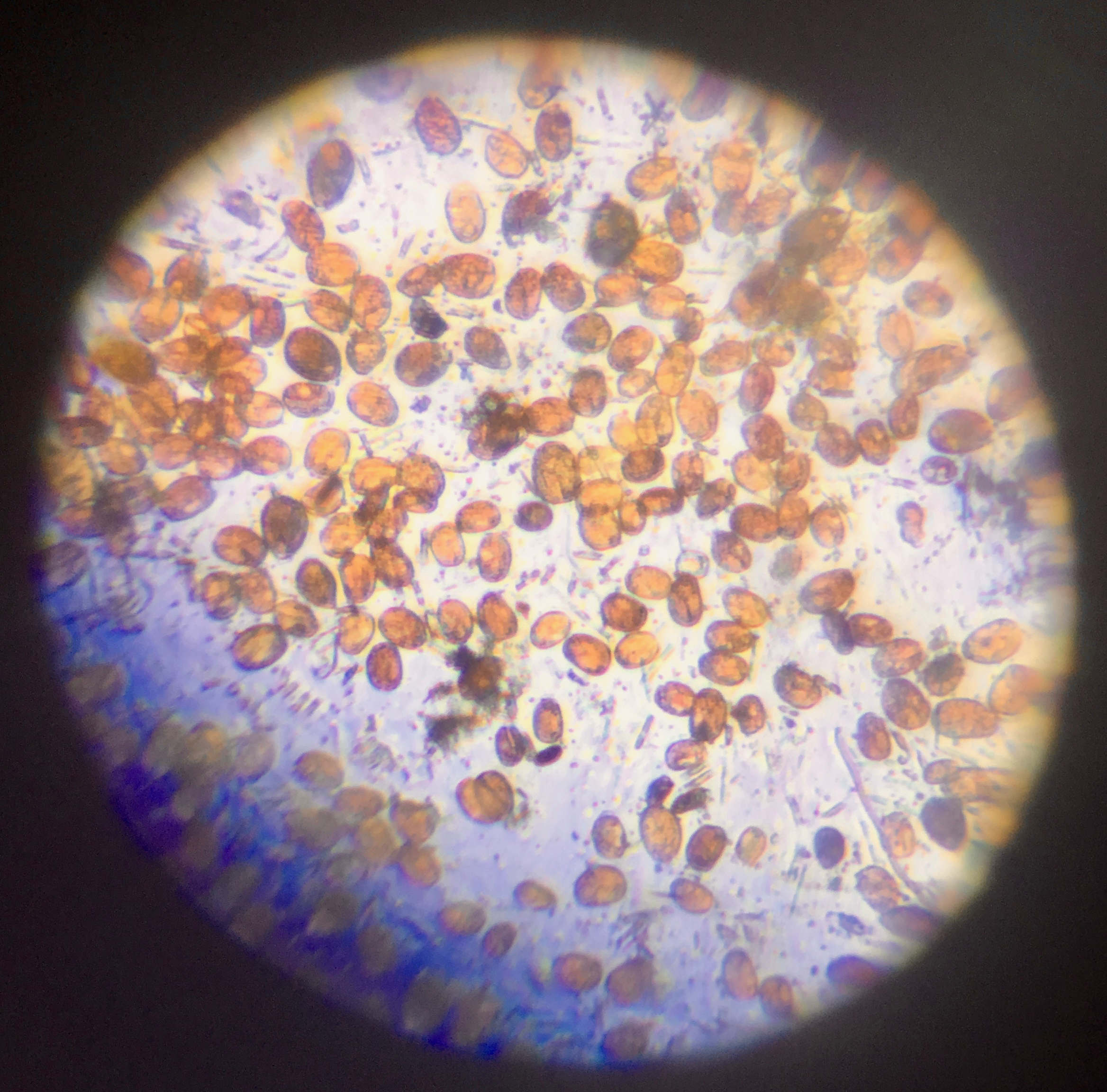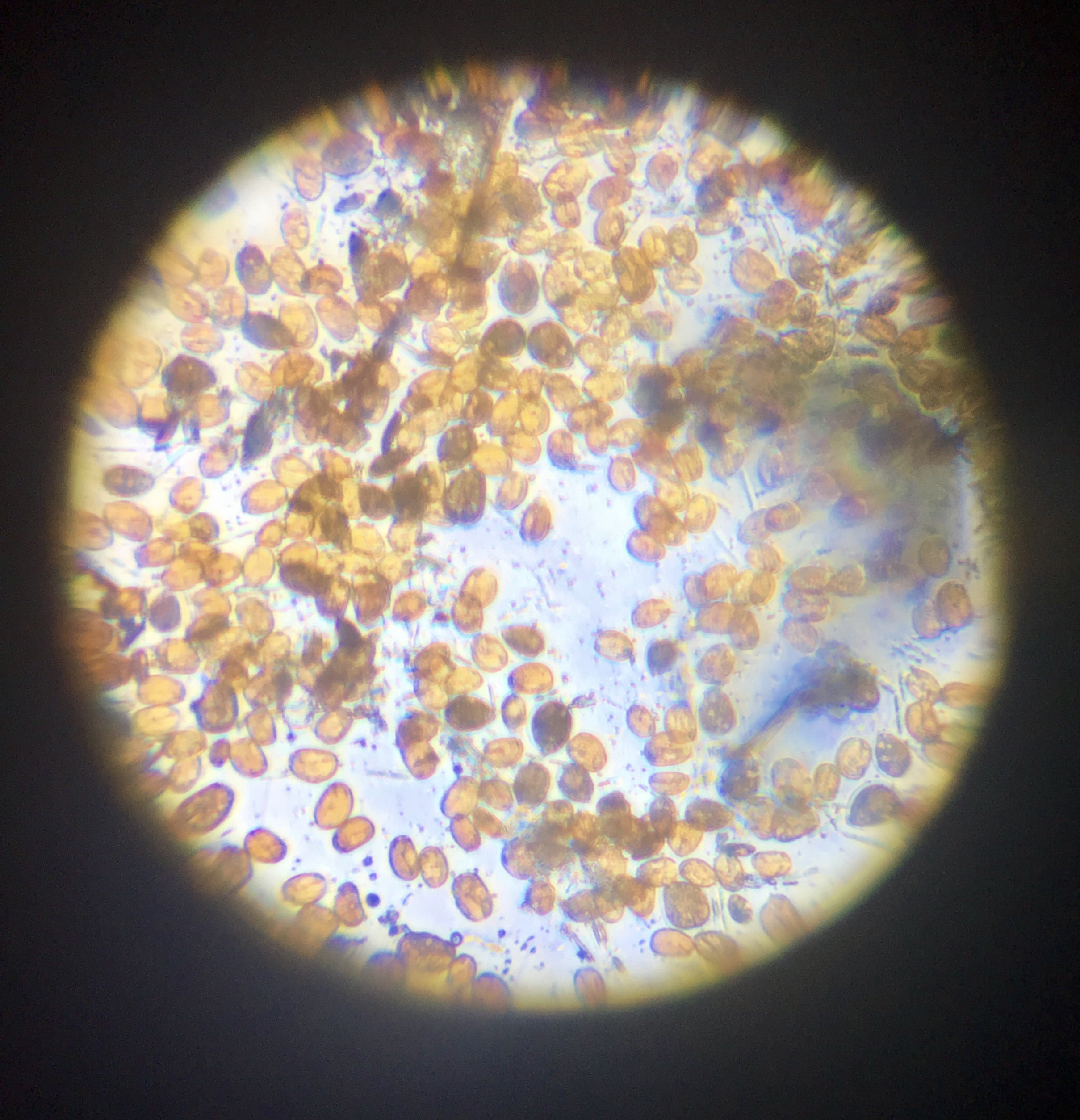- Joined
- Aug 22, 2016
- Messages
- 1,371
- Reaction score
- 386
I have always found that scrapping off the dinos feeds my corals, and gives my tank a natural source of food. Not to menention my tang and clownfish love it
Follow along with the video below to see how to install our site as a web app on your home screen.
Note: This feature may not be available in some browsers.
Btw, what's a lux meter?
I'm really not sure where to go from here.
Diatoms, maybe. But nothing grows on a diet of our dinos. They have too many toxins and chemical defenses.I have always found that scrapping off the dinos feeds my corals, and gives my tank a natural source of food. Not to menention my tang and clownfish love it
Ostreopsis!@mcarroll Here ya go.........This was after it started coming back after a blackout. There were 10 times this amount two days later on the slide.
@zachxlutz time to get these buggers under a scope and start a passive ongoing cell killing/removal system (UV and diatom filtration gets thumbsup).
A few comments based on reading your posts from the last several months.
A lot of the stuff you've done was good, and some of it would be good if done at the right time, and others sound like they'd be good - but actually I've seen it more often help dinos.
Eyes on the prize. Don't get distracted by algae growth, and start worrying about choking down on dosing N & P inputs. After dinos are WELL in the past, then you can scale up grazer population to keep algae in check.
Good on dosing simple inorganic P and N. Don't elevate ORGANIC forms of P & N inputs - dinos do well on this. Feed what you have to. Garf grunge was a great idea. Some few people have seen improvements from healthy live rock additions alone. I guess your tank was too far in grip of dinos to see positives. Try to avoid feeding nori - the seaweed seems to be a 1-stop shop for all the things dinos love. vitamins, trace elements, amino acids etc. Some reefers have seen such increase in dino response that they were convinced that Sea Veggies was contaminated with dino cells. (it wasn't - it just had stuff dinos liked). AcroPower - dinos LOVE this stuff (amino acids). I can grow incredible densities of nasty brown by adding this. Live phyto and copepods. this is so dumb, but these inputs help rather than hurt dinos. Copepods are too small and fragile to eat any noticeable amount of dinos, and instead they get trapped and killed in dino mucus and become dino food, I suspect the phyto ends up the same. I'm also worried about your clean up crew additions. Based on the pictures, it seems they'll mostly be eating dinos, which means they'll either succumb to toxins gradually or starve from avoiding bad stuff. Run some GAC for a little toxin protection - what you described on your birdsnest sends up red flags. That "dino smell" you reported - we don't know if the smell is dino toxin, or if its from dino-associated bacteria, but it's a good indicator that they are running the show in your system. I guess what I'm saying is any animals you add and any phyto/copepods that go into a system with visible dinos, are basically an organic nutrient input, and their death will fuel the dino growth.
Side-note: aquavitro activate 99% chance it's fine. But paranoid me would rather put high P miracle grow that's thoroughly labeled into my tank (and I have) than dose something that says "It's phosphorus - trust us it's 4 good kinds". RHF comment on it elsewhere was it's nothing special so I guess it's fine. Still when I'm trying to add something specific in a particular form I hate labels that tell me "Ingredients: all good stuff, with no bad things added!"
sorry: long post, but you've been doing lots of intelligent things and seen poor results, felt like it deserved detailed feedback.
p.s. really interested in your scope ID. The growth form preferring sand is not typical of ostreopsis, but only seen that nasty dino smell reported with ostis.


Those photos are almost certainly Large cell amphidinium, but I think I agree the bubbles say we should look again. Also comment about "water being brown after scraping glass" also points to something else. Vid can really make an ID easier, if possible.

The Dinos are making/trapping more bubbles than they were at the time of these photos so I’m concerned the Dino population has shifted since these photos.
Dunno what those fish can/can't take. But if they can go without nori for a while, then do it. Sounds weird, I know.
Re: nori. I’m sure the tang and the fox face will be ok for a while only getting mysis and pellets?
No. Not at first. Best not to kill them all too fast. Toxin risk. After you see big reduction in population, then yes - agitate, blast, stir etc. Get as many into water as possible.The diatom filter and UV filter will arrive tomorrow and I’ll set those up. Should I be agitating the sand bed and blowing off the rocks more once I get them going in order to get the dinos in the water column to be filtered/killed?
Those photos are almost certainly Large cell amphidinium, but I think I agree the bubbles say we should look again. Also comment about "water being brown after scraping glass" also points to something else. Vid can really make an ID easier, if possible.
Dunno what those fish can/can't take. But if they can go without nori for a while, then do it. Sounds weird, I know.
No. Not at first. Best not to kill them all too fast. Toxin risk. After you see big reduction in population, then yes - agitate, blast, stir etc. Get as many into water as possible.
Those photos are almost certainly Large cell amphidinium, but I think I agree the bubbles say we should look again. Also comment about "water being brown after scraping glass" also points to something else. Vid can really make an ID easier, if possible.
Dunno what those fish can/can't take. But if they can go without nori for a while, then do it. Sounds weird, I know.
No. Not at first. Best not to kill them all too fast. Toxin risk. After you see big reduction in population, then yes - agitate, blast, stir etc. Get as many into water as possible.
Inorganic P (&N) keep these measurably elevated.
- Thoughts on continuing dosing of inorganic nitrate/phosphate?
- What about my refugium lighting time? I've recently decreased it drastically from 18 hours to 6 hours a night in an effort to decease the macro consumption of nutrients to allow for the the tank to grow some algae and outcompete the dinos. It really seems like my actions of increasing nutrients and decreasing nutrient export has allowed for the dinos to explode.
- Large cell amphidinium responds well to UV, correct?
You are right. A couple cells in that sample did look just like ostreopsis, many more looked like the amphidinium traits, and most there wasn't enough detail to be sure.I'm not an expert by any stretch of the imagination but the sesame seed shape of some of the darker colored dinos make it look like there are Ostreopsis mixed in with the amphidinium.
I'm not an expert by any stretch of the imagination but the sesame seed shape of some of the darker colored dinos make it look like there are Ostreopsis mixed in with the amphidinium.
Inorganic P (&N) keep these measurably elevated.
Large cell amphidinium DOESN'T respond to UV, but tank pics and descriptions say that's not the biggest or only culprit at the moment.
And I say grow as much algae as you can, wherever you can. And if it lowers your P & N, dose more.
You are right. A couple cells in that sample did look just like ostreopsis, many more looked like the amphidinium traits, and most there wasn't enough detail to be sure.
Vid to go along with the pic would help a ton.
And now, it seems like the population may have shifted since the pic anyway.
exactly like you said - first close-up is ostreopsis (sesame seed), last close-up is coolia (round - also the low power shot is this one plus 2 forms of pennate diatoms) ...
And this one is prorocentrum (oval).
These kinds all have and do respond to UV in other people's systems.
To address what @mcarroll was saying earlier, about your UV being well-rated for the size - the manufacturers ratings are based on tiny bacteria and 5 micron greenwater (microalgae) - not based on our massive 60 micron armored dinos. so I don't know how good their guidance is.
If your issue is power, then just based on a handful of anecdotes 2 gallons per UVwatt is enough, and based on you - 5 gallons per watt maybe isn't. I had kinda spitballed 3gal per watt as a minimum wattage number to maybe go for - but I haven't seen enough reports to have any confidence. And maybe your UV stopped working at all? The small tank test should provide some guidance there.
I did a test once with ostreopsis - poured them through a 24W UV (the pour was slower flow than normal operation) to see if it was a one-trip kill, in which case the only issue would be getting the dinos to go through. The ostis were still swimming happily immediately after as well as 24 hours later. It's only one very unscientific test, but I suspect this means the damage is done by repeated accumulated oxidative stress from multiple trips through the UV.
And maybe it doesn't kill them at all - maybe they just spend all their energy repairing the oxidative damage that they can't thrive. I dunno. [edit: actually multiple reports of ostis disappearing in less than 3 days "overnight" as some claim - means that the effect is stronger than just not being able to grow and thrive anymore]
but I know the prorocentrum and coolia are strongly reduced, and ostis are pushed to near oblivion by properly functioning UV.

Hi,
Why are you not using ozone. It kills ostreopsis and prorocentrum when dosed for several days. I got rid of two plagues in two weeks. Total erradicación confirmed with my microscope
